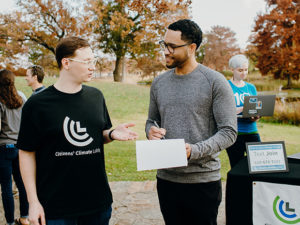Let’s Get to Work on Clean Energy Permitting Reform
Keep the drumbeat from 2024 going 🥁
What is Clean Energy Permitting Reform About?
Just like you need a building permit to expand your home, big energy projects must get written approval from local, state, and/or federal authorities to start construction. There are three key parts to successful energy permitting reform:
1. Siting/building clean energy projects
Right now, it takes an average of 4.5 years for federal agencies just to complete environmental impact statements for major energy projects. These are important assessments, but we need them to move faster and speed up the pace with which we build new clean energy projects. Congress took the first steps to address this in the June 2023 debt ceiling bill.
2. Transmitting that clean energy across the country
Thanks to tax credits passed in the Inflation Reduction Act, development of new solar and wind energy projects will grow exponentially. But building them is only part of the challenge – they also need to be connected to the grid to move power to the houses and businesses that need them. Ultimately, we need to triple our current capacity to transmit clean electricity by 2050.
3. Involving local communities
Better permitting allows local communities to give their input on energy projects early in the process and choose good projects over bad ones. Good projects should be approved faster, harmful projects should be rejected faster, and all new projects should safeguard the lives and health of people living nearby.
Frequently Asked Questions
Why do we need clean energy permitting reform?
A slow permitting process is creating a bottleneck that’s slowing down the deployment of key technologies like electrical transmission lines, and thus clean energy projects like solar and wind farms that need those transmission lines to connect to the power grid. Clean energy permitting reform is crucial to loosen that bottleneck, bring more clean energy online sooner, and cut climate pollution as fast as possible.
Why are we asking for clean energy permitting reform now?
The passage of the ADVANCE Act showed us Congress can and will come together to support permitting reforms for energy that doesn’t create climate pollution.
What provisions do we want to see in a new permitting reform package?
Good permitting reform doesn’t just speed up new clean energy projects. We must still increase our capacity to transmit clean energy and improve early community input on these projects.
In recent years, the nation has only expanded its electricity transmission capabilities at a rate of 1% annually; well below the 2% rate seen in prior decades. On average, building a new electrical transmission line takes over a decade. Suppose construction of energy infrastructure continues at this pace. In that case, we will not be able to lower our emissions at the speed and scale necessary and ensure Americans have affordable and reliable energy in the 21st century.
Additionally, clean energy isn’t a tradeoff. Any new projects should safeguard the lives and health of people living near them and should prioritize feedback from local communities early on in the permitting process.
Will permitting reform increase fossil fuel production?
Most of the new infrastructure proposed in the U.S. is now for clean energy. Reports from Lawrence Berkeley National Laboratory found that in 2021, 85% of new energy capacity was clean energy. More than 97% of new energy projects currently awaiting permits are clean energy, and just 3% are natural gas. In each of the past three years, 84% of new energy capacity built in the United States was clean energy.
Should I customize my message to Congress?
Absolutely! Your voice matters—make it count! Congressional offices pay the most attention to unique messages that feel authentic and personal. Our message tool even gives you a customization score as you edit, helping you make the biggest impact.
To stand out, start with a compelling sentence about why you care about climate action or describe the local climate impacts you’re witnessing. A personal touch grabs attention and makes your message harder to ignore.
How else can I help?
Share this page with any friends, family and coworkers who want to help reduce America’s climate pollution!
Who is Citizens’ Climate Lobby?
Citizens’ Climate Lobby (CCL) is a nonprofit, nonpartisan grassroots advocacy climate change organization that exists to create the political will for climate change solutions by enabling individual breakthroughs in the exercise of personal and political power.
Our consistently respectful, nonpartisan approach to climate education is designed to create a broad, sustainable foundation for climate action across all geographic regions and political inclinations.
CCL empowers everyday people to work with their community and their members of Congress. Our supporters cover the political spectrum and work in more than 450 local chapters. Together, we’re building support for a national bipartisan solution to climate change.


